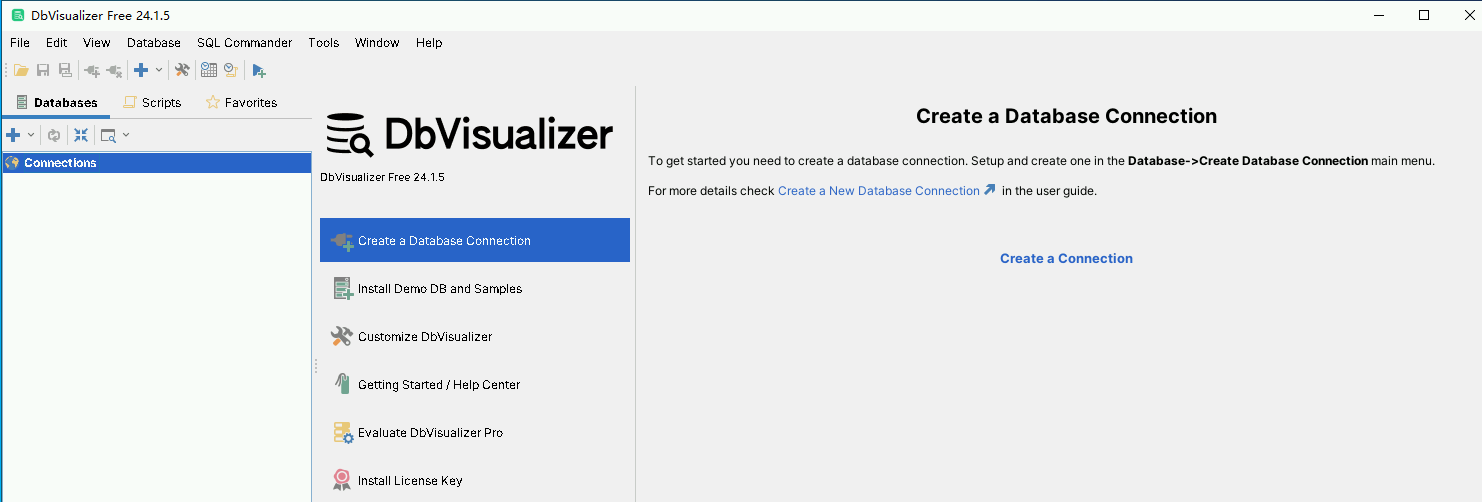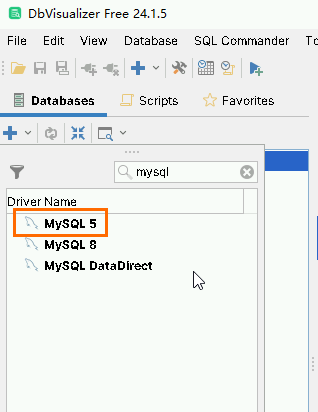This topic describes how to use DbVisualizer to connect to an AnalyticDB for MySQL cluster.
Prerequisites
Before you use DbVisualizer, make sure that the following requirements are met:
You are familiar with the compatibility between DbVisualizer and AnalyticDB for MySQL. For more information, see Compatibility overview.
- MySQL JDBC is installed.
DbVisualizer is installed.
The IP address of the device on which DBVisualizer is installed is added to a whitelist of the AnalyticDB for MySQL cluster. For more information, see Configure a whitelist.
A public endpoint is obtained for the AnalyticDB for MySQL cluster if you want to connect to the cluster over the Internet. For more information, see Apply for or release a public endpoint.
Procedure
Start DbVisualizer. On the Databases tab, click the
 icon.
icon. 
Double-click MySQL 5.

Configure the connection parameters that are described in the following table.

Parameter
Description
Driver Type
The driver type that is used to connect to the AnalyticDB for MySQL cluster. Select MySQL 5.
Database Server
The public endpoint that is used to connect to the AnalyticDB for MySQL cluster. You can view the connection information about the cluster on the Cluster Information page of the AnalyticDB for MySQL console.
Database Port
The port number that is used to connect to the AnalyticDB for MySQL cluster. The default port number is 3306.
Database
The name of the database in the AnalyticDB for MySQL cluster.
Database Userid
The name of the account that is used to connect to the AnalyticDB for MySQL cluster.
Database Password
The password of the account that is used to connect to the AnalyticDB for MySQL cluster.
After you configure the preceding parameters, click Connect.
After the AnalyticDB for MySQL cluster is connected, you can use DbVisualizer to manage data.